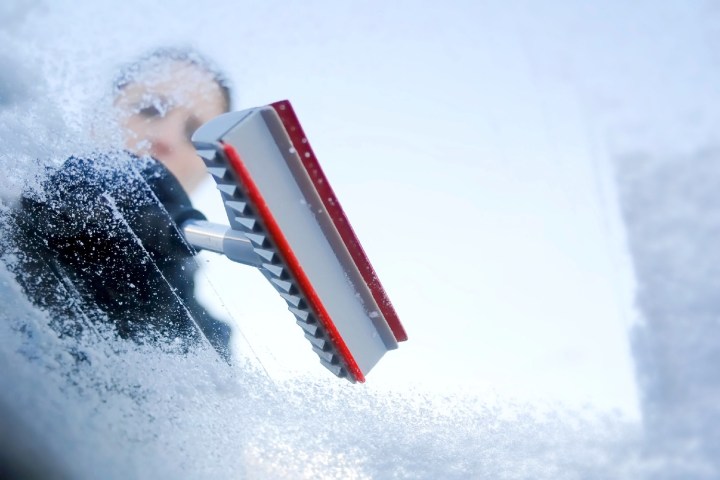
“What we have developed is a water-repellent aluminum surface that traps millions of tiny air pockets underneath a sheet of frost growing atop the surface,” Jonathan Boreyko, an assistant professor in Virginia Tech’s Biomedical Engineering and Mechanics (BEAM) department, told Digital Trends.
“Picture a person lying on top of a bed of nails, but now replace the person with a sheet of frost. Surfaces that trap air underneath water drops are called superhydrophobic and have been well known for about two decades now. But what makes our findings so exciting is that we extend the concept to frost, instead of just liquid water. This is exciting because during defrosting, the underlying air pockets enable the melting ice to rapidly roll down the surface, even at very low tilt angles.”
The researchers call this “dynamic defrosting” — and say it could be used for everything from the aforementioned midwinter car windshields to airplanes to heat pumps. The work is described in a paper published in the journal ACS Applied Materials & Interfaces.
Boreyko says that the work builds on previous research he has carried out regarding superhydrophobic surfaces. Like some of the most significant discoveries, it also came from a deeply personal place.
“My breakthrough regarding the dynamic defrosting idea was realizing that frost is nothing more than frozen dew droplets,” he continued. “So if we could trap air underneath dew droplets to make them highly mobile, it followed that we should be able to trap air underneath frost to make it mobile upon melting. This first occurred to me in the wintertime when I was running late to work, and was getting frustrated at how long it took to defrost my car.”
From here, the plan is to develop the work for possible commercialization, although Boreyko acknowledged that there’s still work to be done in this regard.
“Namely, the nanostructured superhydrophobic surface required for dynamic defrosting is quite delicate and prone to degradation under real-life conditions,” he said. “Other researchers have been investigating self-healing superhydrophobic coatings, so one approach for future work is to attempt a self-healing superhydrophobic defroster. Another possibility is focusing on applications that don’t require long-term durability, such as a RainX-type spray that can be reapplied as needed.”
Once things are ready, though, this is totally a Kickstarter we’re on board for!


